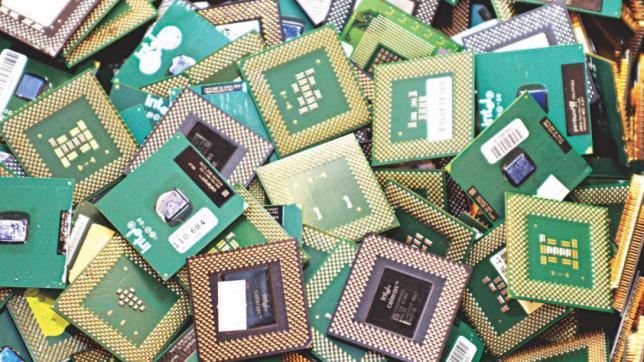If you’re reading this article on a screen, be it your desktop or laptop or smartphone – or any electronic device – sooner or later, you will be contributing to e-waste.
There are so many things we waste. Food, paper, glass, plastic, and finally the environment; you name it, we’ve wasted it and you know it. Heck, we even waste time. As you may have already guessed, the term “e-waste” is short for electronic waste and describes all the electronic devices that is discarded after use.
Examples of such waste include your grandparents’ old radio, your mom’s previous cellphone, your brother’s fancy wristwatch, and the AA-battery in your toy car. The list goes on and on; look around you, and you will find a number of things that plays this dirty game. And no, nostalgic values don’t help here.
Here’s a fact to rattle your brain: almost 50 million metric tons of e-waste are generated every year around the world, mostly by developed or developing countries. Yes, that is a BIG number for a category of waste which does not receive enough limelight for the threat it possesses. Even worse, only about 12.5 percent i.e. 1/8th of the total e-waste is recycled.Where do the rest of it go?
To know the reality of how e-waste is generated and where its fate lies, we must look at life cycles of electronic products.
Let’s take my smartphone for example. I bought it a little more than a year ago, discarding another set I was using; it wasn’t doing well, performance-wise. I keep it in drawer now – all parts intact and fresh. The newly-bought phone, thanks to the ever-so-advancing technology, might be good for another yearuntil I decide to upgrade to a newer model. Thus, this one too will suffer the same fate as the older one – rotting in dust.
That’s just the tip of the iceberg. The smartphone is loaded with parts that, when evaluated separately, make the case for e-waste even stronger. The lithium-ion battery, the glass panel used for the screen, the detailed circuitry which includes metals and toxic substances [even traces of gold, yes], the plastic body which covers it all, and even the protective cases accumulate to contributing to acute environmental and health deterioration.
If a small mobile phone could do such damage, imagine what larger appliances like old computer monitors and sound systems and refrigerators could do. Even the trusty “energy-saving” bulb contains gases and micro-devices that cause harm when thrown away. As the saying goes – little drops of water make the mighty ocean.

The life cycle doesn’t stop there, no. There are markets that hoardsuch rejected products. Little children and bhangariwalasgo from one house to another looking to buy them for the price of nothing. At the storages, the devices are dismantled for their individual parts and that is their first contact with a neglected form of pollution. It reaches an even higher risk when the unwanted bits are dumped in landfills and sources of water.
The risks posed by e-waste affect not only the environment, but also humans directlyas we breathe the air and the toxicity seeps into our food chain. There have been reported cases over the years of children from the informal sector being victims to diseases like asthma, hearing loss, eyesight problems and even cancer. Exposure to e-waste stimulates infant mortality rates as well.
E-waste does not only generate from home either. The biggest contributor of e-waste in Bangladesh has been its ship-breaking industry, totaling almost 2.5 million metric tons per year. While analysis can be done by studying the life cycles of different materials on board, there is no doubt how this huge revenue-earning industry has caused a number of deaths and given rise to environmental pollution.
As we move forward to a more digital Bangladesh, we must also look at matters that we leave behind. Hence we ask, is there a way to tackle the adverse effects that are generated by e-waste? While it is difficult to place our bets on one correct answer, there are steps that can be taken for prevention.
Relevant authorities and organisations can come together to pinpoint causes and effects of e-waste; policies can be strengthened against ill-use of abandoned electronic devices; recycling can be promoted and sustainable methods developed for better consumption; special attention can be given to industries that rely on collection and production of e-waste – and even then we would still be scratching the surface.
While there are very few alternatives to getting that new phone you’ve been saving up for, do think about your household, the environment, and people around you when making the choice. Just thinking about it could be your first step to a greener lifestyle and a better world to live in.
The writer is Sub-editor of Shout and an engineering environmentalist.


Recent Comments